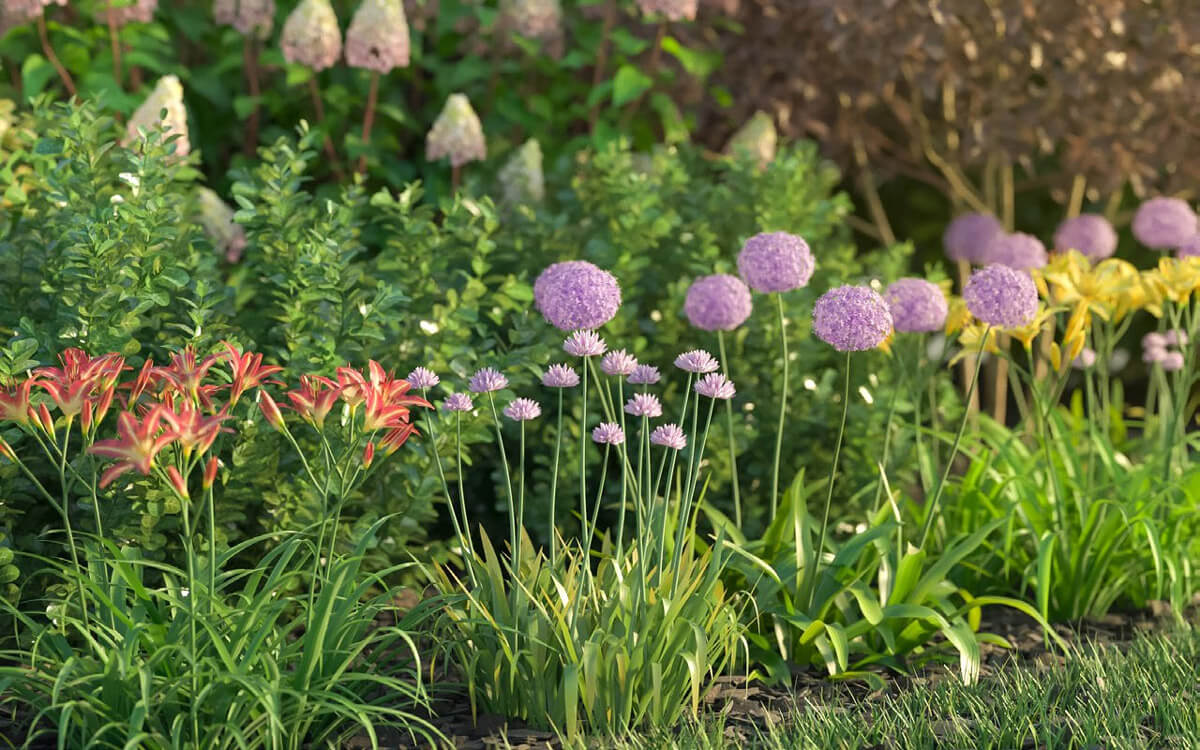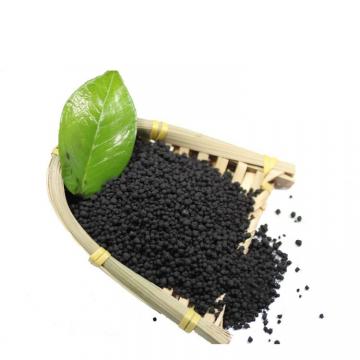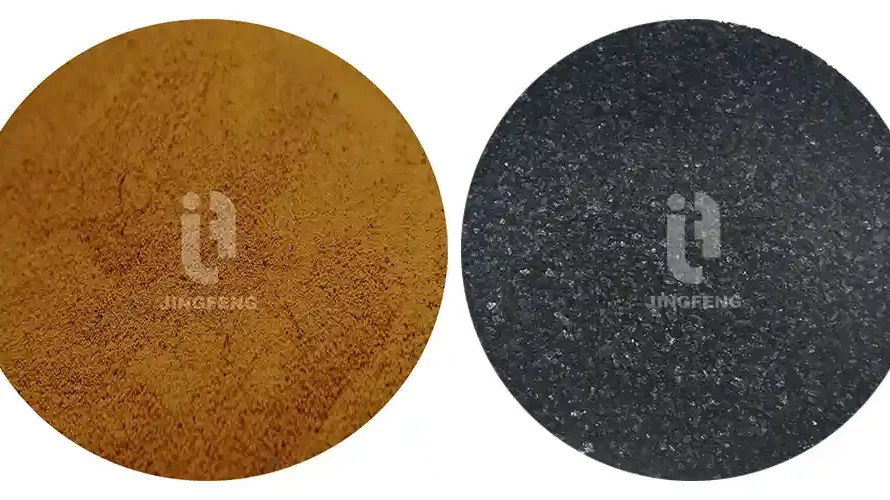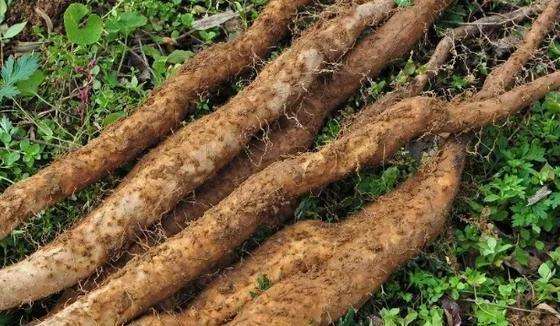Humate, as an important component of soil humus, has significant application effects in flower cultivation.
For example, humic acid raw material peat as the main component of the substrate is widely used in flower seedlings, transplanting, cuttings, and potting, which greatly promotes the development of the flower industry ;
Humate organic fertilizer and fulvic acid have significant effects in promoting the growth and development of flowers, increasing flower output, regulating flowering period, prolonging the ornamental period, and improving ornamental properties.

Now, by consulting the literature of the past 10 years, the application effects of humate organic fertilizer on flowers are summarized as follows.
-
Promote the growth and development of flowers.
Humate organic fertilizer and fulvic acid can promote the growth and development of flowers, mainly in promoting flower cutting rooting, root growth, biomass increase, plant height growth, leaf number and branch number increase, and bulbous flower root system increase.
Studies have shown that:
①The use of humic acid and biochar can improve the growth and morphological parameters of marigold plants, increase the absorption of macro-elements and trace elements in the soil by marigolds, and promote the transportation of nutrients to the stems, with 500 mg of humic acid /L and biochar 40 g/kg are the best (Karimi et al., 2020, Communications in Soil Science and Plant Analysis);
②The explants of the evergreen Rhododendron(micro buds) were transferred to the Anderson rooting medium containing humic acid 1, 2 mg/L for 56 days, which improved the root morphological characteristics of the Rhododendron microbuds, such as root length, root number and rooting rate, and increase the level of endogenous hormones indole-3-acetic acid and gibberellin and antioxidant enzyme activity(Mohamed S. Elmongy et al., 2018, Scientia Horticulturae);
③Low concentration of humic acid (0.2 mg/L) can promote the development of lily root system, greatly promote the enzyme activity related to starch synthesis in the early stage of development, delay the appearance time of carbon starvation by accelerating sucrose/starch utilization and conversion, and promote the enlargement of lily bulbs. The weight is 468 mg (2.9 times that of the control), and the bulb diameter is 11.68 mm[Wu Yun et al., 2016, Journal of Zhejiang University-Science B (Biomedicine & Biotechnology)];
④Use 20 mL of rooting agent containing humic acid water-soluble fertilizer (containing indoxynaphthalene acetic acid additive), add 1 to 2 kg of water, soak the sweet-scented osmanthus cuttings for 30 minutes, and conduct cutting test. The rooting rate after insertion is above 84.5%, which is more effective compared with that in clean water (Li Sancheng et al., 2016, “Henan Forestry Science and Technology”);
⑤Add humic acid to the compost of landscaping waste, then form the compost and mix it with peat as a substrate for chrysanthemum cultivation. The results show that compared with compost without adding humic acid, compost with exogenous additives such as humic acid can significantly increase the biomass, number of leaves and plant height of chrysanthemum, and promote plant root system development (root length and root tip number), especially the growth of fibrous roots, and the accumulation of nutrients(Xu Yukun et al., 2014, “Henan Agricultural Science”).

-
Improve the ornamental quality of flowers.
Humate organic fertilizer and fulvic acid can improve the ornamental quality of flowers, increase the number of flower branches and flower buds, increase the flower diameter, brighten the color, advance the flowering time, extend the flowering period, regulate the flowering period, and extend the life of fresh-cut vases.
Studies have shown that:
① 0~4 ℃ refrigeration for 4 weeks and 300 mg/L humic acid irrigation can accelerate the flowering of peony and ensure the quality of flowering(Zhang Jiaping et al., 2019, Plos one);
②Humic acid fertilizer can effectively increase the antioxidant enzyme activity of the petals of vase chrysanthemums, reduce the content of malondialdehyde, delay the senescence process of vase chrysanthemums, and extend the life of vase chrysanthemums.
The lifespan of vase-planting chrysanthemums that have been applied with humic acid fertilizer can reach 13.7 days, which improves the ornamental value of chrysanthemums(Fan Hongmei, 2015, “Master’s Thesis of Shandong Agricultural University”).
③ Applying humic acid liquid fertilizer to the soil in early spring can promote early germination, early flowering, large flower diameter, long flowering period, and colorful flowers.
The average plant height of the four cultivars “Angela”, “Western Land”, “Lucky” and “Barton” is 113 cm, the number of flowers per plant is 56.5, the flower diameter is 9.2 cm, and the number of branches is 9.9. They are significantly larger than the control group, and the air-drying rate of the branches is only 16%, which greatly improves the ornamental value of the rose(Yang Yonghua et al., 2014, “Grassland Science”);
④ Compared with the control group, spraying humic acid water-soluble fertilizer can significantly improve the vegetative growth of salvia splendens. The specific performance is to promote growth, make the flower color more vivid, extend the flowering period, and significantly increase its ornamental value(Hai Jianping, 2014, “Northern Gardening”).
⑤The mortality rate of cyclamen was greatly reduced by using 500 mg/L fulvic acid to treat cyclamen. It has a certain promoting effect on the formation of flower buds, and the number of flower buds keeps increasing with the increase of treatment times(Tang Dengming et al., 2014, “Jiangsu Agricultural Sciences”).

-
Improve flower resistance.
Humate organic fertilizer and fulvic acid can physiologically regulate the resistance of flowers to adverse environmental stresses (salt-alkali stress, low temperature, drought, pests and diseases).
Research shows:
①Exogenous fulvic acid can improve the resistance of chrysanthemum seedlings under salt stress. Under 150 mmol/L NaCl stress, different concentrations of fulvic acid (50, 100, 200, 300 mg/L) compared with NaCl stress alone increased the growth of chrysanthemum seedlings by 3.18%-14.84%; decrease the relative conductivity 18.72%~40.33%; increase chlorophyll content by 1.34%~58.82%; decrease malondialdehyde content by 16.85%~30.33%; decrease proline content by 23.50%~62.79%; treatment with 200 mg/L fulvic acid has the best effect (Ding Ding et al., 2020, “Jiangsu Agricultural Sciences”).
②Foliar spraying of potassium humate can effectively increase the activities of the protective enzymes superoxide dismutase and catalase in Anthurium andraeanum somatic cells under low temperature stress, and reduce the production of malondialdehyde. And it can weaken the reduction degree of transpiration rate, stomatal conductance and net photosynthetic rate of Anthurium andraeanum after low temperature stress.
Among them, potassium humate extracted from Inner Mongolia lignite after HNO3 oxidation has the most obvious effect, which can effectively improve the cold resistance of Anthurium andraeanum (Zhang Caifeng et al., 2015, “Shanxi Agricultural Sciences”);
③Compared with the control group, 200 mg/L humic acid significantly reduced the malondialdehyde and superoxide anion content of cockscomb seedling leaves under drought stress, and significantly increased the antioxidant enzyme activity.
By adjusting the content of osmotic adjustment substances and the activity of protective enzymes, the damage of drought stress to the seedlings of the cockscomb is effectively reduced, thereby improving the drought resistance of the seedlings of the cockscomb [Wang Juan et al., 2014, “Journal of Southwest University (Natural Science Edition)”].
④Spraying proper amount of fulvic acid can greatly reduce the stomata transpiration rate of gardenia potted gardenia in greenhouse, the stomata opening can be reduced by 12.83%~78.38%, and the daily water consumption can be reduced by 0.1~4.6 mm. The regulation of fulvic acid on leaf stomata directly affects the spraying position of leaves, and the indirect effect on the level of endogenous hormone abscisic acid is negligible.
Spraying low-concentration fulvic acid can also promote photosynthesis and greatly improve the water use efficiency of crop leaves. The best spray concentration is 1:300 (fulvic acid: water), and the lasting effect is 15 to 18 days(Ma Zhiyun et al., 2011, “Beijing Water Utilities”);
⑤The plant source humic acid treatment of salvia splendens on the basis of improving its ornamental, the control rate of aphids reached more than 80%(Lu Pin et al., 2011, “Humic Acid”).

-
Improve economic traits, yield and intrinsic quality of flowers.
In addition to ornamental value, flowers also have economic value. For example, sunflower seeds can be used to squeeze oil, red peony root and marigold can be used for medicinal purposes, and lilies are edible and medicinal. Humate organic fertilizer and fulvic acid can improve other economic characteristics, yield and internal quality on the basis of improving the ornamental characteristics of flowers.
The research shows that:
①The mixed modifier of desulphurization gypsum and humic acid, based on the improvement of saline-alkali land in Hetao irrigation area, has a significant increase in sunflower seed yield, which is 51.63% higher than the control group(Gao Huimin et al., 2020, “Journal of Irrigation and Drainage”);
②Appropriate application of lignite (28% total humic acid content), nitrogen fertilizer, and phosphate fertilizer can increase the production of red peony, while appropriate application of lignite and phosphate fertilizer can increase paeoniflorin content. According to the following formula: Urea 200~240 kg/hm2, superphosphate 550~687 kg/hm2, brown coal 3700~4200 kg/hm2, can increase the yield of red peony to 2800~3200 kg/hm2, and the content of paeoniflorin is 3%~4%(Wang Limin et al., 2020, “Humic Acid”);
③Humic acid fertilizer (water-soluble humic acid ≥8%) with a suitable ratio of npk can increase marigold lutein content and flower yield. The optimum ratio of npk is N:P2O5:K2O=1:(1.2~2):(0.6~1.25), which is 9.30% higher than potassium sulfate compound fertilizer (12-18-15)(Xiang Guodong, 2016, “Humic Acid”);
④Humic acid liquid fertilizer can promote the increase of volatile oil of Hypericum perforatum, and increase the content of volatile oil by 6 times(Helaleh sadat kaboli farshchi,2014,Notulae Scientia Biologicae);
⑤Adding 20%-30% humic acid fertilizer to organic fertilizer can promote the transportation of Lilium lily nutrients to the underground part. It promotes the increase of lily production, can effectively reduce the nitrate content in the lily bulb, increase the activity of nitrate reductase, and improve the nutritional quality of lily (Zhang Feng, 2013, “Heilongjiang Agricultural Science”).
In addition to the above flowers, humate organic fertilizer and fulvic acid also have significant effects on flowers such as impatiens(Aslıhan ESRİNGÜ,2015,Akademik Ziraat Dergisi), gladiolus(Marihus Altoé Baldotto,2013,Revista Ceres), hibiscus(Wei Shenglin, 2009, “Northern Gardening”), cineraria(Yu Fengming et al., 2004, “Shaanxi Science and Technology Press”), flowering plum(Wang Limin et al., 2003, “Humic Acid”), and jasmine (Zhou Jin, 2003, “Master Thesis of Sichuan Agricultural University”).
Come to our Alibaba store to buy it: humate organic fertilizer and fulvic acid







